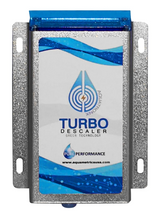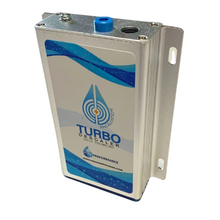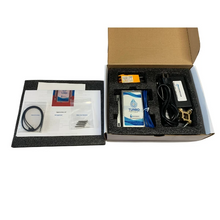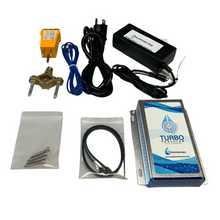Electronic Scale Inhibitor / Water Softener
Use code
WATERISLIFE
to get 10% off
Electronic and chemical free descaling technology is controversial and unpredictable with many options to choose from in the marketplace.
It has been a significant challenge to separate the real science of electronic descaling from the pseudo–science and market hype permeating the industry. Frequently, an electronic descaler works in one house but not in the house next door and no one has seemed to know why. Understanding these problems was a primary driver in the creation of the Aquametrics Turbo Descaler. The basic technology of electronic descaling in general has been shown to work but user complaints are common. Interviewing users and testing competitor devices uncovered three basic industry-wide deficiencies:
• Descalers often do not work.
• If a descaler works at all, it takes too long for visible results.
• The user never knows if the descaler is working or not.
The Aquametrics Turbo Descaler was designed to overcome these problems.
The Aquametrics Turbo Descaler has built–in computer diagnostics, calibration, and continuous self–testing to assure uniform unit–to–unit performance and confirmation of successful performance over the years.
The Turbo Descaler is an excellent add-on component to our LSX salt free descaling system.
HOW DOES IT WORK?
ADDRESSING THE DEFICIENCIES
- Greater power means a more effective and faster-acting descaler. But designing a descaler with greater power, yet passing FCC standards, was a challenge. Ultimately, a pure, powerful, and effective descaling signal was engineered that passed FCC tests.
- This pure signal (nearly free of radio noise) passed FCC Part B, (residential) Part A (commercial and industrial), and Part 18 (scientific and laboratory) requirements – an industry first.
- Further interference protection (shielding) was provided by the Turbo Descaler’s aluminum housing. Plastic enclosures used by the rest of the industry are not suited to providing the shielding desirable for the descaler’s larger signal to pass FCC standards.
- Immediately following are oscilloscope descaling signal strength readings of the Turbo Descaler and its most powerful competitor. The Turbo Descaler, over the same time, is delivering many times the descaling energy.

COMPARISON
AQUAMETRICS TURBO DESCALER (Every cycle has same potential for descaling)

NEAREST COMPETITOR (It has a good peak, but the signal rapidly decays. Note long signal bursts with no descaling activity taking place)









